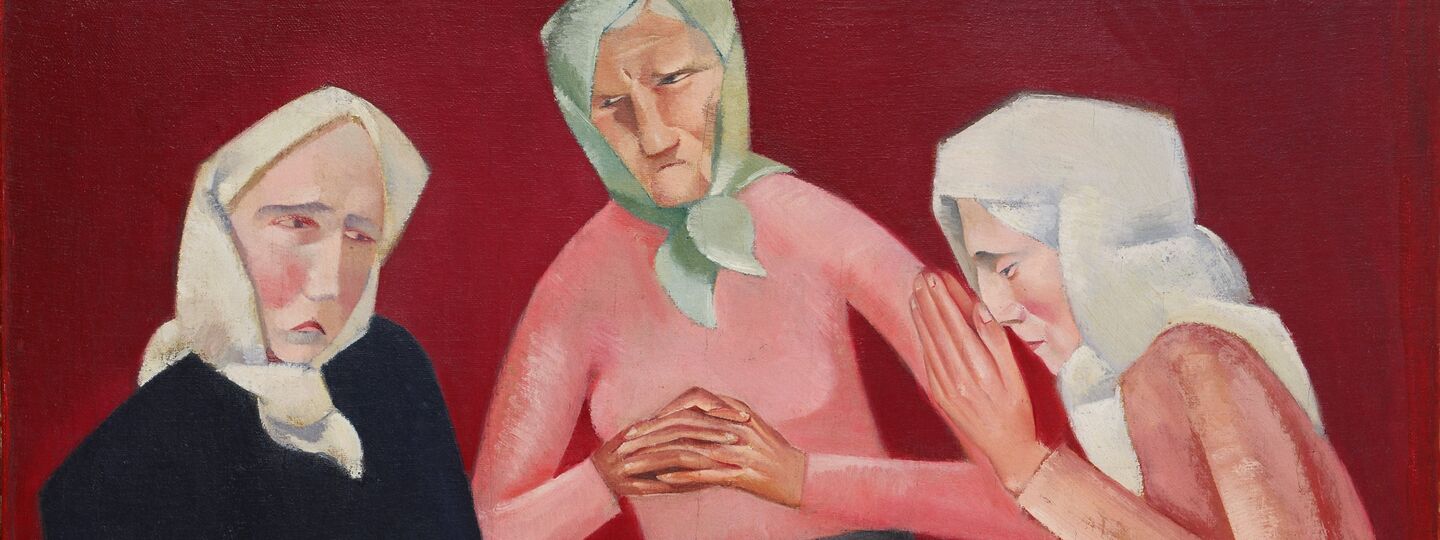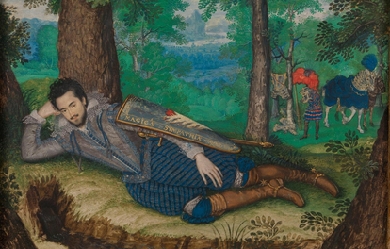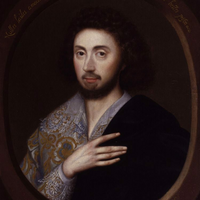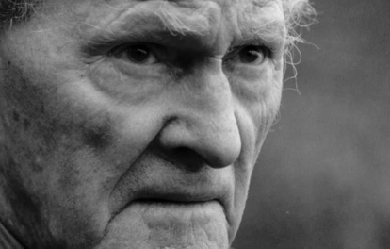
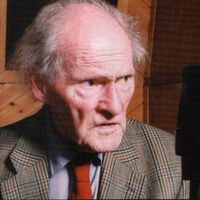
Ronald Stuart Thomas (29 March 1913 – 25 September 2000), published as R. S. Thomas, was a Welsh poet and Anglican priest who was noted for his nationalism, spirituality and deep dislike of the anglicisation of Wales. In 1955, John Betjeman, in his introduction to the first collection of Thomas’s poetry to be produced by a major publisher, Song at the Year's Turning, predicted that Thomas would be remembered long after Betjeman himself was forgotten. M. Wynn Thomas said: "He was the Aleksandr Solzhenitsyn of Wales because he was such a troubler of the Welsh conscience. He was one of the major English language and European poets of the 20th century." R. S. Thomas was born in Cardiff, the only child of Thomas Hubert and Margaret (née Davis). The family moved to Holyhead in 1918 because of his father's work in the merchant navy. He was awarded a bursary in 1932 to study at Bangor University, where he read Classics. In 1936, having completed his theological training at St. Michael's College, Llandaff, he was ordained as a priest in the Church in Wales. From 1936 to 1940 he was the curate of Chirk, Denbighshire, where he met his future wife, Mildred (Elsi) Eldridge, an English artist. He subsequently became curate at Tallarn Green, Flintshire. Thomas and Mildred were married in 1940 and remained together until her death in 1991. Their son, Gwydion, was born 29 August 1945. The Thomas family lived on a tiny income and lacked the comforts of modern life, largely by the Thomas's choice. One of the few household amenities the family ever owned, a vacuum cleaner, was rejected because Thomas decided it was too noisy. For twelve years, from 1942 to 1954, Thomas was rector at Manafon, near Welshpool in rural Montgomeryshire. It was during his time at Manafon that he first began to study Welsh and that he published his first three volumes of poetry, The Stones of the Field, An Acre of Land and The Minister. Thomas' poetry achieved a breakthrough with the publication of his fourth book Song at the Year's Turning, in effect a collected edition of his first three volumes, which was critically very well received and opened with Betjeman's famous introduction. His position was also helped by winning the Royal Society of Literature's Heinemann Award. Thomas learnt the Welsh language at age 30, too late in life, he said, to be able to write poetry in it. The 1960s saw him working in a predominantly Welsh speaking community and he later wrote two prose works in Welsh, Neb (English: Nobody), an ironic and revealing autobiography written in the third person, and Blwyddyn yn Llŷn (English: A Year in Llŷn). In 1964 he won the Queen's Gold Medal for Poetry. From 1967 to 1978 he was vicar at St Hywyn's Church (built 1137) in Aberdaron at the western tip of the Llŷn Peninsula. Thomas retired from church ministry in 1978 and he and his wife relocated to Y Rhiw, in "a tiny, unheated cottage in one of the most beautiful parts of Wales, where, however, the temperature sometimes dipped below freezing", according to Theodore Dalrymple. Free from the constraints of the church he was able to become more political and active in the campaigns that were important to him. He became a fierce advocate of Welsh nationalism, although he never supported Plaid Cymru because he believed they did not go far enough in their opposition to England. In 1996 Thomas was nominated for the Nobel Prize for Literature (the winner that year was Seamus Heaney). Thomas died on 25 September 2000, aged 87, at his home at Pentrefelin near Criccieth. He had been ill with heart trouble and had been treated at Gwynnedd hospital until two weeks before he died. After his death an event celebrating his life and poetry was held in Westminster Abbey with readings from Heaney, Andrew Motion, Gillian Clarke and John Burnside. Thomas's ashes are buried close to the door of St. John's Church, Porthmadog, Gwynedd. Beliefs Thomas believed in what he called "the true Wales of my imagination", a Welsh-speaking, aboriginal community that was in tune with the natural world. He viewed western (specifically English) materialism and greed, represented in the poetry by his mythical "Machine", as the destroyers of community. He could tolerate neither the English who bought up Wales and, in his view, stripped it of its wild and essential nature, nor the Welsh whom he saw as all too eager to kowtow to English money and influence. This may help explain why Thomas was an ardent supporter of CND and described himself as a pacifist but also why he supported the Meibion Glyndŵr fire-bombings of English-owned holiday cottages in rural Wales. On this subject he said in 1998, "what is one death against the death of the whole Welsh nation?" He was also active in wildlife preservation and worked with the RSPB and Welsh volunteer organisations for the preservation of the Red Kite. He resigned his RSPB membership over their plans to introduce non-native kites to Wales. Thomas's son, Gwydion, a resident of Thailand, recalls his father's sermons, in which he would "drone on" to absurd lengths about the evil of refrigerators, washing machines, televisions and other modern devices. Thomas preached that they were all part of the temptation of scrambling after gadgets rather than attending to more spiritual needs. "It was the Machine, you see", Gwydion Thomas explained to a biographer. "This to a congregation that didn’t have any of these things and were longing for them." Although he may have taken some ideas to extreme lengths, Theodore Dalrymple wrote, Thomas "was raising a deep and unanswered question: What is life for? Is it simply to consume more and more, and divert ourselves with ever more elaborate entertainments and gadgetry? What will this do to our souls?" Although he was a cleric, he was not always charitable and was known for being awkward and taciturn. Some critics have interpreted photographs of him as indicating he was "formidable, bad-tempered, and apparently humorless." Works Almost all of Thomas's work concerns the Welsh landscape and the Welsh people, themes with both political and spiritual subtext. His views on the position of the Welsh people, as a conquered people are never far below the surface. As a cleric, his religious views are also present in his works. His earlier works focus on the personal stories of his parishioners, the farm labourers and working men and their wives, challenging the cosy view of the traditional pastoral poem with harsh and vivid descriptions of rural lives. The beauty of the landscape, although ever-present, is never suggested as a compensation for the low pay or monotonous conditions of farm work. This direct view of "country life" comes as a challenge to many English writers writing on similar subjects and challenging the more pastoral works of such as contemporary poets as Dylan Thomas. Thomas's later works were of a more metaphysical nature, more experimental in their style and focusing more overtly on his spirituality. Laboratories of the Spirit (1975) gives, in its title, a hint at this development and also reveals Thomas's increasing experiments with scientific metaphor. He described this shift as an investigation into the "adult geometry of the mind".} Fearing that poetry was becoming a dying art, inaccessible to those who most needed it, "he attempted to make spiritually minded poems relevant within, and relevant to, a science-minded, post-industrial world", to represent that world both in form and in content even as he rejected its machinations. Despite his nationalism Thomas could be hard on his fellow countrymen. Often his works read as more of a criticism of Welshness than a celebration. He himself said there is a "lack of love for human beings" in his poetry. Other critics have not been so harsh. Al Alvarez said: "He was wonderful, very pure, very bitter but the bitterness was beautifully and very sparely rendered. He was completely authoritative, a very, very fine poet, completely off on his own, out of the loop but a real individual. It's not about being a major or minor poet. It's about getting a work absolutely right by your own standards and he did that wonderfully well." Thomas's final works commonly sold 20,000 copies in Britain alone. Books * The Stones of the Field (1946) * An Acre of Land (1952) * The Minister (1953) * Song at the Year's Turning (1955) * Poetry for Supper (1958) * Tares, [Corn-weed] (1961) * The Bread of Truth (1963) * Words and the Poet (1964, lecture) * Pietà (1966) * Not That He Brought Flowers (1968) * H'm (1972) * What is a Welshman? (1974) * Laboratories of the Spirit (1975) * Abercuawg (1976, lecture) * The Way of It (1977) * Frequencies (1978) * Between Here and Now (1981) * Ingrowing Thoughts (1985) * Neb (1985) in Welsh, autobiography, written in the third person * Experimenting with an Amen (1986) * Welsh Airs (1987) * The Echoes Return Slow (1988) * Counterpoint (1990) * Blwyddyn yn Llŷn (1990) in Welsh * Pe Medrwn Yr Iaith : ac ysgrifau eraill ed. Tony Brown & Bedwyr L. Jones, essays in Welsh (1990) * Mass for Hard Times (1992) * No Truce with the Furies (1995) * Autobiographies (1997, collection of prose writings) * Residues (2002, posthumously) References Wikipedia - http://en.wikipedia.org/wiki/R._S._Thomas
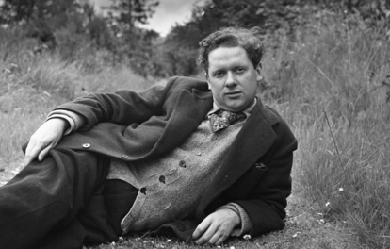

Dylan Marlais Thomas (27 October 1914 – 9 November 1953) was a Welsh poet and writer who wrote exclusively in English. In addition to poetry, he wrote short stories and scripts for film and radio, which he often performed himself. His public readings, particularly in America, won him great acclaim; his sonorous voice with a subtle Welsh lilt became almost as famous as his works. His best-known works include the “play for voices” Under Milk Wood and the celebrated villanelle for his dying father, “Do not go gentle into that good night”. Appreciative critics have also noted the craftsmanship and compression of poems such as “In my Craft or Sullen Art”, and the rhapsodic lyricism in “And death shall have no dominion” and “Fern Hill”.
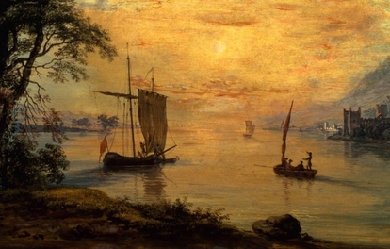
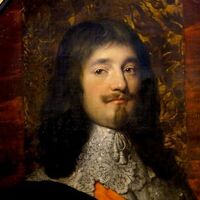
Henry Rice Vaughan (1621 − April 23, 1695) was a Welsh author, physician and metaphysical poet. Vaughan and his twin brother the hermetic philosopher and alchemist Thomas Vaughan, were the sons of Thomas Vaughan and his wife Denise (née Morgan) of 'Trenewydd', Newton, in Brecknockshire, Wales. Their grandfather, William, was the owner of Tretower Court. Vaughan spent most of his life in the village of Llansantffraed, near Brecon, where he is also buried. Vaughan is also known for writing a seminal work on economics and currencies, A Discourse on Coins and Coinage. Early life Both Henry and his twin Thomas were schooled locally by the rector of Llangattock (Crickhowell), the Rev. Matthew Herbert. This occupied six years preceding their attendance at Jesus College, Oxford, England in 1638: s9, p.21 However, around 1640, Vaughan's family influenced him to pursue a career in law to the abandonment of an Oxford degree. As the Civil War developed, he was recalled home from London, initially to serve as a secretary to Sir Marmaduke Lloyd, a chief justice on the Brecknockshire circuit and staunch royalist. Military service interrupted his study of the law and, upon his return, Vaughan began to practise medicine. By 1646, he had married Catherine Wise with whom he reared a son, Thomas, and three daughters, Lucy, Frances, and Catherine. After his first wife's death, he married her sister, Elizabeth. Secular works Vaughan took his literary inspiration from his native environment and chose the descriptive name "Silurist," derived from his homage to the Silures, the Celtic tribe of pre-Roman south Wales which strongly resisted the Romans. This name is a reflection of the deep love Vaughan felt towards the Welsh mountains of his home in what is now part of the Brecon Beacons National Park and the River Usk valley where he spent most of his early life and professional life. By 1647 Henry Vaughan, with his wife and children, had chosen life in the country. This is the setting in which Vaughan wrote Olor Iscanus, the (Swan of Usk). However, this collection was not published until 1651, more than three years after it was written. It is believed that there was great crisis in Vaughan's life between the authorship and publication of Olor Iscanus.[7] During these years, his grandfather William Vaughan died and he was evicted from his living in Llansantffraed. Vaughan later decried the publication, having "long ago condemned these poems to obscurity". Olor Iscanus is filled with odd words and similes that beg for attention despite its dark and morbid cognitive appeal. This work is founded on crises felt in Vaughan's homeland, Brecknockshire. During the Civil War there was never a major battle fought on the ground of Brecknockshire, but the effects of the war were deeply felt by Vaughan and his surrounding community. The Puritan Parliament visited misfortune on the community, ejecting many of their foes, the Anglicans and Royalists. This was an obvious source of misfortune for Vaughan, who also lost his home at that time: There is a distinct difference between the atmosphere Vaughan attempts to convey in this work and in his most famous work, Silex Scintillans. Olor Iscanus is a direct representation of a specific period in Vaughan's life, which emphasizes other secular writers and provides allusions to debt and happy living. A fervent topic of Vaughan throughout these poems is the Civil War and reveals Vaughan's somewhat paradoxical thinking that, in the end, gives no clear conclusion to the question of his participation in the Civil War. Vaughan states his complete satisfaction of being clean on "innocent blood" but also provides what seem to be eyewitness accounts of battles and his own "soldiery". Although Vaughan is thought to have been a royalist, these poems express contempt for all current authority and a lack of zeal for the royalist cause.[4]: s9, p.21 His poems generally reflect a sense of severe decline, which possibly means that Vaughan lamented the effects of the war on the monarchy and society. His short poem "The Timber", ostensibly about a dead tree, concludes "thy strange resentment after death / Means only those who broke - in life - thy peace." Conversion The period shortly preceding the publication of Henry Vaughan's Silex Scintillans marked an important period of his life. Certain indications in the first volume and explicit statements made in the preface to the second volume of Silex Scintillans suggest that Vaughan suffered a prolonged sickness that inflicted much pain. Vaughan interprets this experience to be an encounter with death and a wake-up call to his "misspent youth". Vaughan believes he is spared to make amends and start a new course not only in his life but in the literature he would produce. Vaughan himself describes his previous work as foul and a contribution to "corrupt literature". Perhaps the most notable mark of Vaughan's conversion is how much it is credited to George Herbert. Vaughan claims that he is the least of Herbert's many "pious converts".[4] It is during this period of Vaughan's life, around 1650, that he adopts the saying "moriendo, revixi", meaning "by dying, I gain new life". Poetic Influences It was not until Vaughan's conversion and the writing of Silex Scintillans that he received significant acclaim. He was greatly indebted to George Herbert, who provided a model for Vaughan's newly founded spiritual life and literary career, in which he displayed "spiritual quickening and the gift of gracious feeling"[8]:p2 derived from Herbert. Archbishop Trench has proposed that "As a divine Vaughan may be inferior [to Herbert], but as a poet he is certainly superior". Critics praise Vaughan's use of literary elements. Vaughan's use of monosyllables, long-drawn alliterations and his ability to compel the reader place Vaughan as "more than the equal of George Herbert". Yet others say that the two are not even comparable, because Herbert is in fact the Master. While these critics admit that Henry Vaughan's use of words can be superior to Herbert's, they believe his poetry is, in fact, worse. Herbert's profundity as well as consistency are said to be the key to his superiority. While the superiority or inferiority of Vaughan and Herbert is a question with no distinct answer, one cannot deny that Vaughan would have never written the way he did without Herbert's direction. The explicit spiritual influence of Herbert on Henry Vaughan is undeniable. The preface to Vaughan's Silex Scintillans does all but proclaim this influence. The prose of Vaughan exemplifies this as well. For instance, The Temple, by Herbert, is often seen as the inspiration and model on which Vaughan created his work. Silex Scintillans is most often classed with this collection of Herbert's. Silex Scintillans borrows the same themes, experience, and beliefs as The Temple. Herbert's influence is evident both in the shape and spirituality of Vaughan's poetry. For example, the opening to Vaughan's poem 'Unprofitableness': ´How rich, O Lord! How fresh thy visits are! is reminiscent of Herbert's 'The Flower': How fresh, O Lord, how sweet and clean Are thy returns! ev'n as the flowers in spring. Another work of Vaughan's that clearly parallels George Herbert is Mount of Olives, e.g., the passage, Let sensual natures judge as they please, but for my part, I shall hold it no paradoxe to affirme, there are no pleasures in the world. Some coloured griefes of blushing woes there are, which look as clear as if they were true complexions; but it is very sad and tyred truth, that they are but painted. This echoes Herbert's Rose. In this world of sugar's lies, And to use a larger measure Than my strict yet welcome size. First, there is no pleasure here: Coloure'd griefs indeed there are, Blushing woes that look as clear, As if they could beauty spare. Critics have complained that Vaughan is enslaved to Herbert's works, using similar "little tricks" such as abrupt introductions and whimsical titles as a framework for his own work, and that he "failed to learn" from Herbert. Vaughan carried an inability to know his limits and focused more on the intensity of the poem, meanwhile losing the attention of his audience. However, Alexander Grosart denies that Henry Vaughan was solely an imitator of George Herbert (Grosart, 3). There are moments in Vaughan's writings where the reader can identify Vaughan's true self, rather than an imitation of Herbert. In such passages Vaughan is seen to demonstrate naturalness, immediacy, and ability to relate the concrete through poetry. In some instances, Vaughan derives observations from Herbert's language that are distinctly his own. It is as if Vaughan takes proprietorship of some of Herbert's work, yet makes it completely unique to himself. Henry Vaughan takes another step away from George Herbert in the manner to which he presents his poetry to the reader. George Herbert in The Temple, which is most often the source of comparison between the two writers, lays down explicit instructions on the reading of his work. This contrasts with the attitude of Vaughan, who considered the experience of reading as the best guide to his meanings. He promoted no special method of reading his works . In these times he shows himself different from any other poet. Much of his distinction derives from an apparent lack of sympathy with the world around him. His aloof appeal to his surroundings detaches him and encourages his love of nature and mysticism, which in turn influenced other later poets, Wordsworth among others. Vaughan's mind thinks in terms of a physical and spiritual world and the obscure relation between the two. Vaughan's mind often moved to original, unfamiliar, and remote places, and this reflected in his poetry. He was loyal to the themes of the Anglican Church and religious festivals, but found his true voice in the more mystical themes of eternity, communion with the dead, nature, and childhood.A poet of revelation who uses the Bible,Nature and his own experience to illustrate his vision of eternity. Vaughan's poetry has a particularly modern sound. Alliteration (conspicuous in Welsh poetry)is more extensively used by Vaughan than most of his contemporaries writing English verse, noticeably in the opening to 'The Water-fall'. Vaughan elaborated on personal loss in two well-known poems, "The World" and "They Are All Gone into the World of Light." Another poem, "The Retreat," combines the theme of loss with the corruption of childhood, which is yet another consistent theme of Vaughan's. Vaughan's new-found personal voice and persona are seen as the result of the death of a younger brother. This is an example of an especially beautiful fragment of one of his poems entitled 'The World': I saw Eternity the other night, Like a great ring of pure and endless light, All calm, as it was bright, And round beneath it, Time in hours, days, years Driv'n by the spheres Like a vast shadow mov'd; in which the world And all her train were hurl'd. A Discourse of Coin and Coinage Vaughan wrote an early work on currency, A Discourse of Coin and Coinage (1675). He argued that it was a mass voluntary consensus, the "concurrence of mankind", that gave currency its value as a medium of exchange, not the laws which enforce the usage of currency or the inherent worth of a currency's material composition (such as gold or silver). This work also contained the earliest known research on price level changes and price indices. John Ramsay McCulloch included A Discourse... in his A Select Collection of Scarce and Valuable Tracts on Money[ (1856). Economist Murray N. Rothbard has said that Vaughan was "perhaps the best economic analyst" of his period. [14] Rothbard has praised Vaughan for recognizing that whilst the value of a good is dependent on consumer demand, a good's price results from the interaction of its subjective utility and relative scarcity. Death and legacy As is the case with many great writers and poets, Henry Vaughan was acclaimed less during his lifetime than after his death on April 23, 1695, aged 73. He is buried in the churchyard of St Bridget's, Llansantffraed, Powys. He is recognised "as another example of a poet who can write both graceful and effective prose"[10] and influenced the work of poets such as Wordsworth, Tennyson and Siegfried Sassoon. The American science fiction writer Philip K. Dick even named Vaughan as a key influence. Works Poems with the Tenth Satire of Juvenal Englished * Peace * Olor Iscanus * Silex Scintillans * Silex Scintillans II * Mount of Olives * Flores Solitudinis * Hermetical Physics * The Chemist's Key * Humane Industry * Thalia Rediviva * The World * The Retreat * The Evening-Watch A Discourse of Coin and Coinage: The first Invention, Use, Matter, Forms, Proportions and Differences, ancient & modern: with the Advantages and Disadvantages of the Rise and Fall thereof, in our own or Neighbouring Nations: and the Reasons. Together with a short Account of our Common Law therein. (1675) References Wikipedia - http://en.wikipedia.org/wiki/Henry_Vaughan
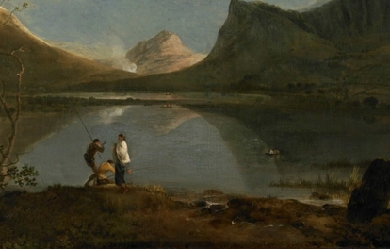
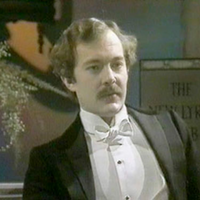
Arthur William Symons (28 February 1865– 22 January 1945), was a British poet, critic and magazine editor. Life Born in Milford Haven, Wales, of Cornish parents, Symons was educated privately, spending much of his time in France and Italy. In 1884–1886 he edited four of Bernard Quaritch’s Shakespeare Quarto Facsimiles, and in 1888–1889 seven plays of the “Henry Irving” Shakespeare. He became a member of the staff of the Athenaeum in 1891, and of the Saturday Review in 1894, but his major editorial feat was his work with the short-lived Savoy. His first volume of verse, Days and Nights (1889), consisted of dramatic monologues. His later verse is influenced by a close study of modern French writers, of Charles Baudelaire, and especially of Paul Verlaine. He reflects French tendencies both in the subject-matter and style of his poems, in their eroticism and their vividness of description. Symons contributed poems and essays to The Yellow Book, including an important piece which was later expanded into The Symbolist Movement in Literature, which would have a major influence on William Butler Yeats and T. S. Eliot. From late 1895 through 1896 he edited, along with Aubrey Beardsley and Leonard Smithers, The Savoy, a literary magazine which published both art and literature. Noteworthy contributors included Yeats, George Bernard Shaw, and Joseph Conrad. Symons was also a member of the Rhymer’s Club founded by Yeats in 1890. In 1892, The Minister’s Call, Symons’s first play, was produced by the Independent Theatre Society– a private club– to avoid censorship by the Lord Chamberlain’s Office. In 1902 Symons made a selection from his earlier verse, published as Poems. He translated from the Italian of Gabriele D’Annunzio The Dead City (1900) and The Child of Pleasure (1898), and from the French of Émile Verhaeren The Dawn (1898). To The Poems of Ernest Dowson (1905) he prefixed an essay on the deceased poet, who was a kind of English Verlaine and had many attractions for Symons. In 1909 Symons suffered a psychotic breakdown, and published very little new work for a period of more than twenty years. His Confessions: A Study in Pathology (1930) has a moving description of his breakdown and treatment. Verse Days and Nights (1889) Silhouettes (1892) London Nights (1895) Amoris victima (1897) Images of Good and Evil (1899) Poems in 2 volumes.(Contains: The Loom of Dreams in the second Volume, 1901), (1902) Lyrics (1903) An anthology of poetry published in the USA only. A Book of Twenty Songs (1905) The Fool of the World and other Poems (1906) Knave of Hearts (1913). Poems written between 1894 and 1908. Love’s Cruelty (1923) Jezebel Mort, and other poems (1931) Essays An Introduction to the study of Browning (1886) Studies in Two Literatures (1897) Aubrey Beardsley: An Essay with a Preface (1898) The Symbolist Movement in Literature (1899; 1919) Cities (1903), word-pictures of Rome, Venice, Naples, Seville, etc. Plays, Acting and Music (1903) Studies in Prose and Verse (1904) Studies in Seven Arts (1906). Figures of Several Centuries (1916) Cities and Sea-Coasts and Islands (1918) Studies in the Elizabethan Drama (1919) Charles Baudelaire: A Study (1920) Dramatis Personae (1925 - US edition 1923) From Toulouse-Lautrec to Rodin (1929) Studies in Strange Souls (1929) Confessions: A Study in Pathology (1930). A book containing Symons’s description of his breakdown and treatment. Wanderings (1931) A Study of Walter Pater (1932) Fiction Spiritual Adventures (1905). With an autobiographical sketch. References Wikipedia—https://en.wikipedia.org/wiki/Arthur_Symons

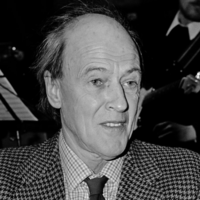
Roald Dahl was a British novelist, short story writer, poet, screenwriter, and fighter pilot. His books have sold over 200 million copies worldwide. Born in Wales to Norwegian parents, Dahl served in the Royal Air Force during the Second World War, in which he became a flying ace and intelligence officer, rising to the rank of acting wing commander. He rose to prominence in the 1940s with works for both children and adults and he became one of the world’s best-selling authors. He has been referred to as "one of the greatest storytellers for children of the 20th century". His awards for contribution to literature include the 1983 World Fantasy Award for Life Achievement, and the British Book Awards’ Children’s Author of the Year in 1990. In 2008, The Times placed Dahl 16th on its list of "The 50 greatest British writers since 1945".
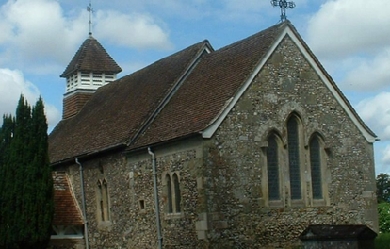
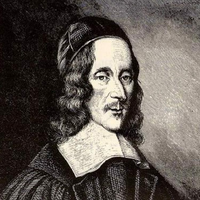
George Herbert (3 April 1593 – 1 March 1633) was a Welsh poet, orator and Anglican priest. Herbert’s poetry is associated with the writings of the metaphysical poets, and he is recognized as “a pivotal figure: enormously popular, deeply and broadly influential, and arguably the most skilful and important British devotional lyricist.” Born into an artistic and wealthy family, Herbert received a good education that led to his admission in 1609 as a student at Trinity College, Cambridge, where Herbert excelled in languages, rhetoric and music. He went to university with the intention of becoming a priest, but when eventually he became the University’s Public Orator he attracted the attention of King James I and may well have seen himself as a future Secretary of State. In 1624 and briefly in 1625 he served in the Parliament of England. After the death of King James, Herbert’s interest in ordained ministry was renewed. In his mid-thirties he gave up his secular ambitions and took holy orders in the Church of England, spending the rest of his life as the rector of the little parish of St Andrews Church, Lower Bemerton, Salisbury. He was noted for unfailing care for his parishioners, bringing the sacraments to them when they were ill, and providing food and clothing for those in need. Henry Vaughan called him “a most glorious saint and seer”. Never a healthy man, he died of consumption at the early age of 39. Throughout his life, he wrote religious poems characterized by a precision of language, a metrical versatility, and an ingenious use of imagery or conceits that was favoured by the metaphysical school of poets. Charles Cotton described him as a “soul composed of harmonies”. Some of Herbert’s poems have endured as popular hymns, including “King of Glory, King of Peace” (Praise): “Let All the World in Every Corner Sing” (Antiphon) and “Teach me, my God and King” (The Elixir). Herbert’s first biographer, Izaak Walton, wrote that he composed “such hymns and anthems as he and the angels now sing in heaven”. Biography Early life and education George Herbert was born 3 April 1593 in Montgomery, Powys, Wales, the son of Richard Herbert (died 1596) and his wife Magdalen née Newport, the daughter of Sir Richard Newport (1511–70). He was one of 10 children. The Herbert family was wealthy and powerful in both national and local government, and George was descended from the same stock as the Earls of Pembroke. His father was a Member of Parliament, a justice of the peace, and later served for several years as high sheriff and later custos rotulorum (keeper of the rolls) of Montgomeryshire. His mother Magdalen was a patron and friend of clergyman and poet John Donne and other poets, writers and artists. As George’s godfather, Donne stood in after Richard Herbert died when George was three years old. Herbert and his siblings were then raised by his mother who helped push for a good education for her children. Herbert’s eldest brother Edward (who inherited his late father’s estates and was ultimately created Baron Herbert of Cherbury) became a soldier, diplomat, historian, poet, and philosopher whose religious writings led to his reputation as the “father of English deism”. Herbert entered Westminster School at or around the age of 12 as a day pupil, although later he became a residential scholar. He was admitted on scholarship to Trinity College, Cambridge in 1609, and graduated first with a Bachelor’s and then with a master’s degree in 1616 at the age of 23. Subsequently, Herbert was elected a major fellow of his college and then appointed Reader in Rhetoric. In 1620 he stressed his fluency in Latin and Greek and attained election to the post of the University’s Public Orator, a position he held until 1628. In 1624, supported by his kinsman the 3rd Earl of Pembroke, Herbert became a Member of Parliament, representing Montgomery. While these positions normally presaged a career at court, and King James I had shown him favour, circumstances worked against Herbert: the King died in 1625, and two influential patrons also died at about the same time. However, his parliamentary career may have ended already because, although a Mr Herbert is mentioned as a committee member, the Commons Journal for 1625 never mentions Mr. George Herbert, despite the preceding parliament’s careful distinction. In short, Herbert made a shift in his path, he angled away from the political future he had been pursuing and turned more fully toward a future in the church. Herbert was presented with the Prebendary of Leighton Bromswold in the Diocese of Lincoln in 1626, whilst he was still a don at Trinity College, Cambridge but not yet ordained. He was not even present at his institution as prebend as it is recorded that Peter Walker, his clerk, stood in as his proxy. In the same year his close Cambridge friend Nicholas Ferrar was ordained Deacon in Westminster Abbey by Bishop Laud on Trinity Sunday 1626 and went to Little Gidding, two miles down the road from Leighton Bromswold, to found the remarkable community with which his name has ever since been associated. Herbert raised money (including the use of his own) to restore the neglected church building at Leighton. Priesthood In 1629, Herbert decided to enter the priesthood and was appointed rector of the small rural parish of Fugglestone St Peter with Bemerton, near Salisbury in Wiltshire, about 75 miles south west of London. Here he lived, preached and wrote poetry; he also helped to rebuild the Bemerton church and rectory out of his own funds. While at Bemerton, Herbert revised and added to his collection of poems entitled The Temple. He also wrote a guide to rural ministry entitled A Priest to the Temple or, The County Parson His Character and Rule of Holy Life, which he himself described as “a Mark to aim at”, and which has remained influential to this day. Having married shortly before taking up his post, he and his wife gave a home to three orphaned nieces. Together with their servants, they crossed the lane for services in the small St Andrew’s church twice every day. Twice a week Herbert made the short journey into Salisbury to attend services at the Cathedral, and afterwards would make music with the cathedral musicians. But his time at Bemerton was short. Having suffered for most of his life from poor health, in 1633 Herbert died of consumption only three years after taking holy orders. Shortly before his death, he sent the manuscript of The Temple to Nicholas Ferrar, the founder of a semi-monastic Anglican religious community at Little Gidding, reportedly telling him to publish the poems if he thought they might “turn to the advantage of any dejected poor soul”, otherwise to burn them. Thanks to Ferrar, they were published not long after his death. Poetry Herbert wrote poetry in English, Latin and Greek. In 1633 all of Herbert’s English poems were published in The Temple: Sacred Poems and Private Ejaculations, with a preface by Nicholas Ferrar. The book went through eight editions by 1690. According to Isaac Walton, when Herbert sent the manuscript to Ferrar, he said that “he shall find in it a picture of the many spiritual conflicts that have passed between God and my soul, before I could subject mine to the will of Jesus, my Master”. In this Herbert used the format of the poems to reinforce the theme he was trying to portray. Beginning with “The Church Porch”, they proceed via “The Altar” to “The Sacrifice”, and so onwards through the collection. All of Herbert’s surviving English poems are on religious themes and are characterised by directness of expression enlivened by original but apt conceits in which, in the Metaphysical manner, the likeness is of function rather than visual. In “The Windows”, for example, he compares a righteous preacher to glass through which God’s light shines more effectively than in his words. Commenting on his religious poetry later in the 17th century, Richard Baxter said, “Herbert speaks to God like one that really believeth in God, and whose business in the world is most with God. Heart-work and heaven-work make up his books”. Helen Gardner later added “head-work” to this characterisation in acknowledgement of his “intellectual vivacity”. It has also been pointed out how Herbert uses puns and wordplay to “convey the relationships between the world of daily reality and the world of transcendent reality that gives it meaning. The kind of word that functions on two or more planes is his device for making his poem an expression of that relationship.” Visually too the poems are varied in such a way as to enhance their meaning, with intricate rhyme schemes, stanzas combining different line lengths and other ingenious formal devices. The most obvious examples are pattern poems like “The Altar,” in which the shorter and longer lines are arranged on the page in the shape of an altar. The visual appeal is reinforced by the conceit of its construction from a broken, stony heart, representing the personal offering of himself as a sacrifice upon it. Built into this is an allusion to Psalm 51:17: “The sacrifices of God are a broken spirit; a broken and a contrite heart.” In the case of “Easter Wings” (illustrated here), the words were printed sideways on two facing pages so that the lines there suggest outspread wings. The words of the poem are paralleled between stanzas and mimic the opening and closing of the wings. In Herbert’s poems formal ingenuity is not an end in itself but is employed only as an auxiliary to its meaning. The formal devices employed to convey that meaning are wide in range. In his meditation on the passage “Our life is hid with Christ in God”, the capitalised words ‘My life is hid in him that is my treasure’ move across successive lines and demonstrate what is spoken of in the text. Opposites are brought together in “Bitter-Sweet” for the same purpose. Echo and variation are also common. The exclamations at the head and foot of each stanza in “Sighs and Grones” are one example. The diminishing truncated rhymes in “Paradise” are another. There is also an echo-dialogue after each line in “Heaven”, other examples of which are found in the poetry of his brother Lord Herbert of Cherbury. Alternative rhymes are offered at the end of the stanzas in “The Water-Course”, while the "Mary/Army Anagram" is represented in its title. Once the taste for this display of Baroque wit had passed, the satirist John Dryden was to dismiss it as so many means to “torture one poor word ten thousand ways”. Though Herbert remained esteemed for his piety, the poetic skill with which he expressed his thought had to wait centuries to be admired again. Prose Herbert’s only prose work, A Priest to the Temple (usually known as The Country Parson), offers practical advice to rural clergy. In it, he advises that “things of ordinary use” such as ploughs, leaven, or dances, could be made to “serve for lights even of Heavenly Truths”. It was first published in 1652 as part of Herbert’s Remains, or Sundry Pieces of That Sweet Singer, Mr. George Herbert, edited by Barnabas Oley. The first edition was prefixed with unsigned preface by Oley, which was used as one of the sources for Izaak Walton’s biography of Herbert, first published in 1670. The second edition appeared in 1671 as A Priest to the Temple or the Country Parson, with a new preface, this time signed by Oley. Like many of his literary contemporaries, Herbert was a collector of proverbs. His Outlandish Proverbs was published in 1640, listing over 1000 aphorisms in English, but gathered from many countries (in Herbert’s day, 'outlandish’ meant foreign). The collection included many sayings repeated to this day, for example, “His bark is worse than his bite” and “Who is so deaf, as he that will not hear?” These and an additional 150 proverbs were included in a later collection entitled Jacula Prudentum (sometimes seen as Jacula Prudentium), dated 1651 and published in 1652 as part of Oley’s Herbert’s Remains. Musical settings Herbert was a skilled lutenist who “sett his own lyricks or sacred poems”. Musical pursuits interested him all though his life and his biographer, Isaac Walton, records that he rose to play the lute during his final illness. With such fitness for music in mind, it is no surprise to find that more than ninety of his poems have been set for singing over the centuries, some of them multiple times. Beginning in his own century, there were settings of “Longing” by Henry Purcell and “And art thou grieved” by John Blow. Some forty were adapted for the Methodist hymnal by the Wesley brothers, among them “Teach me my God and King”, which found its place in one version or another in 223 hymnals. Another poem, “Let all the world in every corner sing”, was published in 103 hymnals, of which one is a French version. Other languages into which his work has been translated for musical settings include Spanish, Catalan and German. In the 20th century, “Vertue” alone achieved ten settings, one of them in French. Among leading modern musicians who set his work were Ralph Vaughan-Williams, who used four by Herbert in "5 Mystical Songs"; Benjamin Britten and William Walton, both of whom set "Antiphon 2"; Ned Rorem who included one in his "10 poems for voice, oboe and strings" (1982); and Judith Weir, whose 2005 choral work Vertue includes three poems by Herbert. Legacy The earliest portrait of George Herbert was engraved long after his death by Robert White for Walton’s biography of the poet in 1674 (see above). Now in London’s National Portrait Gallery, it served as basis for later engravings, such as those by White’s apprentice John Sturt and Henry Hoppner Meyer’s of 1829. Among later artistic commemorations is William Dyce’s oil painting of “George Herbert at Bemerton” (1860) in the Guildhall Art Gallery. The poet is pictured in his riverside garden, prayer book in hand. Over the meadows is Salisbury Cathedral, where he used to join in the musical evensong; his lute leans against a stone bench and against a tree a fishing rod is propped, a reminder of his first biographer, Isaac Walton. There is also a musical reference in Charles West Cope’s “George Herbert and his mother” (1872) in Gallery Oldham. The mother points a poem out to him with an arm twined round his neck in a room that has a virginal in the background. Most representations of Herbert, however, are in stained glass windows, of which there are several in churches and cathedrals. They include Westminster Abbey, Salisbury Cathedral and All Saints Church, Cambridge. His own St Andrew’s Church in Bemerton installed a memorial window, which he shares with Nicholas Ferrar, in 1934. In addition, there is a statue of Herbert in his canonical robes, based in part on the Robert White portrait, in a niche on the West Front of Salisbury Cathedral. In the liturgy too George Herbert is commemorated on 27 February throughout the Anglican Communion and on 1 March of the Calendar of Saints of the Evangelical Lutheran Church in America. There are various collects for the day, of which one is based on his poem “The Elixir”: Our God and King, who called your servant George Herbert from the pursuit of worldly honors to be a pastor of souls, a poet, and a priest in your temple: Give us grace, we pray, joyfully to perform the tasks you give us to do, knowing that nothing is menial or common that is done for your sake... Amen. Works * 1623: Oratio Qua auspicatissimum Serenissimi Principis Caroli. * 1627: Memoriae Matris Sacrum, printed with A Sermon of commemoracion of the ladye Danvers by John Donne... with other Commemoracions of her by George Herbert (London: Philemon Stephens and Christopher Meredith). * 1633: The Temple, Sacred Poems and Private Ejaculations. (Cambridge: Printed by Thomas Buck and Roger Daniel). * 1652: Herbert’s Remains, Or, Sundry Pieces Of that sweet Singer of the Temple consisting of his collected writings from A Priest to the Temple, Jacula Prudentum, Sentences, & c., as well as a letter, several prayers, and three Latin poems.(London: Printed for Timothy Garthwait) References Wikipedia—https://en.wikipedia.org/wiki/George_Herbert
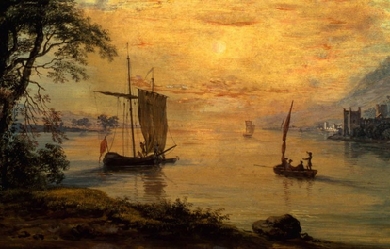

William Henry Davies or W. H. Davies (3 July 1871 – 26 September 1940) was a Welsh poet and writer. Davies spent a significant part of his life as a tramp or hobo, in the United Kingdom and United States, but became one of the most popular poets of his time. The principal themes in his work are observations about life's hardships, the ways in which the human condition is reflected in nature, his own tramping adventures and the various characters he met. Davies is usually considered one of the Georgian Poets, but much of his work is not typical in style or theme of the group. Early Life The son of an iron moulder, Davies was born at 6, Portland Street in the Pillgwenlly district of Newport, Monmouthshire, Wales, a busy port. He had an older brother, Francis Gomer Boase (who was considered "slow") and in 1874 his younger sister Matilda was born. In November 1874, when William was aged three, his father died. The following year his mother Mary Anne Davies remarried and became Mrs Joseph Hill. She agreed that care of the three children should pass to their paternal grandparents, Francis and Lydia Davies, who ran the nearby Church House Inn at 14, Portland Street. His grandfather Francis Boase Davies, originally from Cornwall, had been a sea captain. Davies was related to the famous British actor Sir Henry Irving (referred to as cousin Brodribb by the family); he later recalled that his grandmother referred to Irving as " the cousin who brought disgrace on us". Davies' grandmother was described, by a neighbour who remembered her, as wearing ".. pretty little caps, with bebe ribbon, tiny roses and puce trimmings". Writing in his Introduction to the 1943 Collected Poems of W. H. Davies, Osbert Sitwell recalled Davies telling him that, in addition to his grandparents and himself, his home consisted of "an imbecile brother, a sister ... a maidservant, a dog, a cat, a parrot, a dove and a canary bird." Sitwell also recounts that Davies' grandmother, a Baptist by denomination, was "of a more austere and religious turn of mind than her husband." In 1879 the family moved to Raglan Street, then later to Upper Lewis Street, from where William attended Temple School. In 1883 he moved to Alexandra Road School and the following year was arrested, as one of a gang of five schoolmates, and charged with stealing handbags. He was given twelve strokes of the birch. In 1885 Davies wrote his first poem entitled "Death". In his Poet's Pilgrimage (1918) Davies recounts the time when, at the age of 14, he was left with orders to sit with his dying grandfather. He missed the final moments of his grandfather's death as he was too engrossed in reading "a very interesting book of wild adventure". Delinquent to Supertramp Having finished school under the cloud of his theft he worked first for an ironmonger. In November 1886, his grandmother signed the papers for Davies to begin a five-year apprenticeship to a local picture-frame maker. Davies never enjoyed the craft, however, and never settled into any regular work. He was a difficult and somewhat delinquent young man, and made repeated requests to his grandmother to lend him the money to sail to America. When these were all refused, he eventually left Newport, took casual work and started to travel. The Autobiography of a Super-Tramp, published in 1908, covers his life in the USA between 1893 and 1899, including many adventures and characters from his travels as a drifter. During this period he crossed the Atlantic at least seven times, working on cattle ships. He travelled through many of the states, sometimes begging, sometimes taking seasonal work, but often ending up spending any savings on a drinking spree with a fellow traveller. He took advantage of the corrupt system of "boodle", in order to pass the winter in Michigan, by agreeing to be locked up in a series of different jails. Here, with his fellow tramps, Davies would enjoy the relative comfort of "card-playing, singing, smoking, reading, relating experiences and occasionally taking exercise or going out for a walk." At one stage, on his way to Memphis, Tennessee, he lay alone in a swamp for three days and nights suffering from malaria. The turning point in Davies' life came when, after a week of rambling in London, he spotted a newspaper story about the riches to be made in the Klondike and immediately set off to make his fortune in Canada. Attempting to jump a freight train at Renfrew, Ontario, on 20 March 1899, with fellow tramp Three-fingered Jack, he lost his footing and his right foot was crushed under the wheels of the train. The leg later had to be amputated below the knee and he wore a wooden leg thereafter. Davies' biographers have agreed that the significance of the accident should not be underestimated, even though Davies himself played down the story. Moult begins his biography with the incident and Stonesifer has suggested that this event, more than any other, led Davies to become a professional poet. Davies himself wrote of the accident: "I bore this accident with an outward fortitude that was far from the true state of my feelings. Thinking of my present helplessness caused me many a bitter moment, but I managed to impress all comers with a false indifference… I was soon home again, having been away less than four months; but all the wildness had been taken out of me, and my adventures after this were not of my own seeking, but the result of circumstances." Davies' view of his own disability was ambivalent. In his poem "The Fog", published in the 1913 Foliage, a blind man leads the poet through the fog, showing the reader that one who is handicapped in one domain may well have a considerable advantage in another. Poet He returned to Britain, living a rough life, particularly in London shelters and doss-houses, including the Salvation Army hostel in Southwark known as "The Ark" which he grew to despise. Fearing the contempt of his fellow tramps, he would often feign slumber in the corner of his doss-house, mentally composing his poems and only later committing them to paper in private. At one stage he borrowed money to have his poems printed on loose sheets of paper, which he then tried to sell door-to-door through the streets of residential London. When this enterprise failed, he returned to his lodgings and, in a fit of rage, burned all of the printed sheets in the fire. Davies self-published his first book of poetry, The Soul's Destroyer, in 1905, again by means of his own savings. It proved to be the beginning of success and a growing reputation. In order to even get the slim volume published, Davies had to forgo his allowance and live the life of a tramp for six months (with the first draft of the book hidden in his pocket), just to secure a loan of funds from his inheritance. When eventually published, the volume was largely ignored and he resorted to posting individual copies by hand to prospective wealthy customers chosen from the pages of Who's Who, asking them to send the price of the book, a half crown, in return. He eventually managed to sell 60 of the 200 copies printed. One of the copies was sent to Arthur Adcock, then a journalist with the Daily Mail. On reading the book, as he later wrote in his essay "Gods Of Modern Grub Street", Adcock said that he "recognised that there were crudities and even doggerel in it, there was also in it some of the freshest and most magical poetry to be found in modern books". He sent the price of the book and asked Davies to meet him. Adcock is still generally regarded as "the man who discovered Davies". The first trade edition of The Soul's Destroyer was published by Alston Rivers in 1907. A second edition followed in 1908 and a third in 1910. A 1906 edition, by Fifield, was advertised but has not been verified. Rural life in Kent On 12 October 1905 Davies met Edward Thomas, then literary critic for the Daily Chronicle in London, who was to do more to help him than anyone else. Thomas rented for Davies the tiny two-roomed "Stidulph's Cottage", in Egg Pie Lane, not far from his own home at Elses Farm near Sevenoaks in Kent. Davies moved to the cottage, from 6 Llanwern Street, Newport, via London, in the second week of February 1907. The cottage was "only two meadows off" from Thomas' own house. Thomas adopted the role of protective guardian for Davies, on one occasion even arranging for the manufacture, by a local wheelwright, of a makeshift replacement wooden leg, which was invoiced to Davies as "a novelty cricket bat". In 1907, the manuscript of The Autobiography of a Super-Tramp drew the attention of George Bernard Shaw, who agreed to write a preface (largely through the concerted efforts of his wife Charlotte). It was only because of Shaw that Davies' contract with the publishers was rewritten to allow the author to retain the serial rights, all rights after three years, royalties of fifteen per cent of selling price and a non-returnable advance of twenty five pounds. Davies was also to be given a say on the style of all illustrations, advertisement layouts and cover designs. The original publisher, Duckworth and Sons, refused to accept these demands and so the book was placed instead with London publisher Fifield. A number of anecdotes of Davies' time with the Thomas family in Kent are recounted in the brief account later published by Thomas' widow Helen. In 1911, Davies was awarded a Civil List Pension of £50, later increased to £100 and then again to £150. Davies started to spend more time in London and made many literary friends and acquaintances. Though averse to giving autographs himself, Davies began to make a collection of his own and was particularly keen to obtain that of D. H. Lawrence. Georgian poetry publisher Edward Marsh was able to secure an autograph and also invited Lawrence and wife-to-be Frieda to meet Davies on 28 July 1913. Lawrence was immediately captivated by Davies and later invited him to join them in Germany. Despite his early enthusiasm for Davies' work, however, Lawrence's opinion changed after reading Foliage and he commented after reading Nature Poems in Italy that the verses seemed "so thin, one can hardly feel them". By this time Davies had amassed a library of about fifty books in his cottage, mostly of 16th- and 17th-century poets, and including Shakespeare, Milton, Wordsworth, Byron, Burns, Shelley, Keats, Coleridge, Blake and Herrick. In December 1908 his essay "How It Feels To Be Out of Work", described by Stonesifer as "a rather pedestrian performance", appeared in the pages of The English Review. He continued to send other periodical articles out to editors, but without any success. Society life in London After lodging at a number of temporary addresses in Sevenoaks, Davies moved back to London early in 1914, settling eventually at 14 Great Russell Street in the Bloomsbury district, previously the residence of Charles Dickens. Here in a tiny two-room apartment, initially infested with mice and rats, and next door to rooms occupied by a noisy Belgian prostitute, he lived from early 1916 until 1921. It was during this time in London that Davies embarked on a series of public readings of his work, alongside such others as Hilaire Belloc and W. B. Yeats, impressing such fellow poets as Ezra Pound. He soon found that he was able to socialise with leading society figures of the day, including Lord Balfour and Lady Randolph Churchill. While in London Davies also became friendly with a number of artists, including Jacob Epstein, Harold and Laura Knight, Nina Hamnett, Augustus John, Harold Gilman, William Rothenstein, Walter Sickert, Sir William Nicholson and Osbert and Edith Sitwell. He enjoyed the society of literary men and their conversation, particularly in the rarefied atmosphere downstairs at the Café Royal. He would also meet regularly with W. H. Hudson, Edward Garrett and others at The Mont Blanc in Soho. In his poetry Davies drew extensively for material on his experiences with the seamier side of life, but also on his love of nature. By the time of his prominent place in the Edward Marsh Georgian Poetry series, he was an established figure. He is generally best known for the opening two lines of the poem "Leisure", first published in Songs Of Joy and Others in 1911: "What is this life if, full of care / We have no time to stand and stare..." In October 1917 his work was included in the anthology Welsh Poets: A Representative English selection from Contemporary Writers collated by A. G. Prys-Jones and published by Erskine Macdonald of London. In the last months of 1921, Davies moved to more comfortable quarters at 13 Avery Row, Brook Street, where he rented rooms from the Quaker poet Olaf Baker. He began to find prolonged work difficult, however, suffering from increased bouts of rheumatism and other ailments. Harlow (1993) lists a total of 14 BBC broadcasts of Davies reading his own work made between 1924 and 1940 (now held in the BBC broadcast archive) although none included his most famous work, "Leisure". Later Days, the 1925 sequel to The Autobiography of a Super-Tramp, describes the beginnings of Davies' career as a writer and his acquaintance with Belloc, Shaw and de la Mare, amongst many others. He became "the most painted literary man of his day", drawn and painted by Augustus John, Sir William Nicholson, Dame Laura Knight and Sir William Rothenstein. His head in bronze was the most successful of Epstein's smaller works. Honours, memorials and legacy In 1926 Davies was honoured with the degree of Doctor Litteris, honoris causa from the University of Wales. Davies returned to his native Newport in 1930, where a luncheon was held in his honour at the Westgate Hotel. His return, in September 1938, for the unveiling of the plaque in his honour, proved to be his last public appearance. A large collection of Davies manuscripts, including a copy of "Leisure", dated 8 May 1914, is held by the National Library of Wales. The collection includes a copy of "A Boy's Sorrow", an apparently unpublished poem of two eight-line stanzas relating to the death of a neighbour. Also included is a volume (c. 1916) containing autograph fair copies of 15 Davies poems, some of them apparently unpublished, submitted to James Guthrie (1874–1952) for publication by the Pear Tree Press as a collection entitled Quiet Streams, to which annotations have been added by Lord Kenyon. British writer Gerald Brenan (1894–1987) and his generation were influenced by Davies' Autobiography of a Super-Tramp. In 1951 Jonathan Cape published The Essential W. H. Davies, selected and with an introduction by Brian Waters, a young Gloucestershire poet and writer whose work Davies admired, who described him as "about the last of England's professional poets". The collection included The Autobiography of a Super-tramp, and extracts from Beggars, A Poet's Pilgrimage, Later Days, My Birds and My Garden, as well as over 100 poems arranged by publication period. Many of Davies' poems have been given a musical setting. "Money, O!" was set to music for piano, in G minor, by Michael Head - his 1929 Boosey & Hawkes collection also included settings for "The Likeness", "The Temper of a Maid", "Natures' Friend", "Robin Redbreast" and "A Great Time". There are also three songs by Sir Arthur Bliss - "Thunderstorms", "This Night", and "Leisure" - as well as "The Rain" for voice and piano, by Margaret Campbell Bruce, published in 1951 by J. Curwen and Sons. Experimental Irish folk group Dr Strangely Strange also sang and quoted from "Leisure" on their 1970 album Heavy Petting, with harmonium accompaniment. A musical adaptation of the same poem, with John Karvelas (vocals) and Nick Pitloglou (piano) and an animated film by Pipaluk Polanksi, may be found on YouTube. Also in 1970, Fleetwood Mac recorded "Dragonfly", a song with lyrics taken from Davies' 1927 poem, "The Dragonfly". The song was also recorded by English singer-songwriter and multi-instrumentalist Blake, for his 2011 album The First Snow. On 1 July 1971 a special First Day Cover, with a matching commemorative post-mark was issued by the UK Post Office to mark Davies' centenary. A controversial statue by Paul Bothwell-Kincaid, inspired by the poem "Leisure", was unveiled in Commercial Street, Newport in December 1990, to commemorate Davies' work, on the 50th anniversary of his death. The bronze head of Davies by Epstein, from January 1917, regarded by many as the most accurate artistic impression of Davies and a copy of which Davies owned himself, may be found at Newport Museum and Art Gallery (donated by Viscount Tredegar). In August 2010 the play Supertramp, Sickert and Jack the Ripper by Lewis Davies, concerning an imagined sitting by Davies for a portrait by Walter Sickert, premiered at the Edinburgh Festival. References Wikipedia—https://en.wikipedia.org/wiki/W._H._Davies
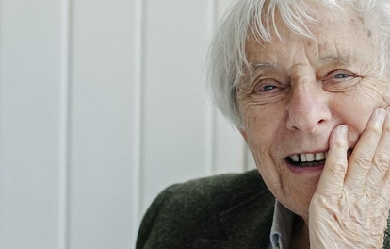
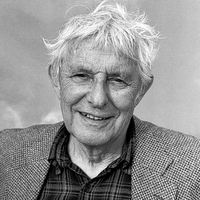
Daniel Abse, CBE FRSL (22 September 1923– 28 September 2014) was a Welsh poet. Early years Abse was born in Cardiff, Wales, to a Jewish family. He was the younger brother of politician and reformer Leo Abse and the eminent psychoanalyst, Wilfred Abse. Unusually for a middle-class Jewish boy, Dannie Abse attended St Illtyd’s College, a working-class Catholic school in Splott. Abse studied medicine, first at the University of Wales College of Medicine, and then at Westminster Hospital Medical School and King’s College London. Abse was a passionate supporter of Cardiff City football club. He first went to watch them play in 1934 and many of his writings refer to his experiences watching and lifelong love of the team known as the “The Bluebirds”. Career as poet Although best known as a poet, Abse worked in the medical field, and was a physician in a chest clinic for over thirty years. He received numerous literary awards and fellowships for his writing. In 1989, he received an honorary doctorate from the University of Wales. His first volume of poetry, After Every Green Thing, was published in 1949. His autobiographic work, Ash on a Young Man’s Sleeve, was published in 1954. He won the Welsh Arts Council Award in both 1971 and 1987, and the Cholmondeley Award in 1985. He was a Fellow of The Royal Society of Literature from 1983. In a foreword to Collected Poems 1948–1976, Abse noted that his poems are increasingly “rooted in actual experience,” both domestic and professional, and many display a reconciliation between Jewish and Welsh themes and traditions. Abse lived for several decades in the north-west area of London, mainly near Hampstead, where he has considerable ties. For several years he wrote a column for the Hampstead and Highgate Express, the local newspaper. These articles were subsequently published in book form. In 2005, his wife Joan Abse was killed in a car accident, while Abse suffered a broken rib. His poetry collection, Running Late, was published in 2006, and The Presence, a memoir of the year after his wife died, was published in 2007; it won the 2008 Wales Book of the Year award. The book was later dramatised for BBC Radio 4. He was awarded the Roland Mathias prize for Running Late. In 2009 Abse brought out a volume of collected poetry. In the same year, he received the Wilfred Owen Poetry Award. Abse was a judge for the inaugural 2010 Hippocrates Prize for Poetry and Medicine. Abse was appointed Commander of the Order of the British Empire (CBE) in the 2012 New Year Honours for services to poetry and literature. Dannie Abse died on 28 September 2014, aged 91. Books * After Every Green Thing Hutchinson, 1948 * Walking Under Water Hutchinson, 1952 * Fire in Heaven Hutchinson, 1956 * Mavericks: An Anthology (editor with Howard Sergeant) Editions Poetry and Poverty, 1957 * Tenants of the House: Poems 1951–1956 Hutchinson, 1957 * Poems, Golders Green Hutchinson, 1962 * Poems! Dannie Abse: A Selection Vista/Dufour, 1963 * Modern European Verse (editor) Vista, 1964 * Medicine on Trial Aldus, 1967 * Three Questor Plays Scorpion, 1967 * A Small Desperation Hutchinson, 1968 * Demo Sceptre, 1969 * Selected Poems Hutchinson, 1970 * Modern Poets in Focus 1 (editor) Corgi, 1971 * Modern Poets in Focus 3 (editor) Corgi, 1971 * Thirteen Poets (editor) Poetry Book Society, 1972 * Funland and Other Poems Hutchinson, 1973 * Modern Poets in Focus 5 (editor) Corgi, 1973 * The Dogs of Pavlov Vallentine, Mitchell, 1973 * A Poet in the Family Hutchinson, 1974 * Penguin Modern Poets 26 (Dannie Abse, D. J. Enright and Michael Longley) Penguin, 1975 * Collected Poems 1948–1976 Hutchinson, 1977 * More Words BBC, 1977 * My Medical School Robson, 1978 * Pythagoras Hutchinson, 1979 * Way Out in the Centre Hutchinson, 1981 * A Strong Dose of Myself Hutchinson, 1983 * One-legged on ice: poems University of Georgia Press, 1983 * Doctors and Patients (editor) Oxford University Press, 1984 * Ask the Bloody Horse Hutchinson, 1986 * Journals From the Ant Heap Hutchinson, 1986 * Voices in the Gallery: Poems and Pictures (editor with Joan Abse) Tate Gallery, 1986 * The Music Lover’s Literary Companion (editor with Joan Abse) Robson, 1988 * The Hutchinson Book of Post-War British Poetry (editor) Hutchinson, 1989 * White Coat, Purple Coat: Collected Poems 1948–1988 Hutchinson, 1989 * People (contributor) National Language Unit of Wales, 1990 * Remembrance of Crimes Past: Poems 1986–1989 Hutchinson, 1990 * The View from Row G: Three Plays Seren, 1990 * Intermittent Journals Seren, 1994 * On the Evening Road Hutchinson, 1994 * Selected Poems Penguin, 1994 * The Gregory Anthology 1991–1993 (editor with A. Stevenson) Sinclair-Stevenson, 1994 * Twentieth-Century Anglo-Welsh Poetry (editor) Seren, 1997 * Welsh Retrospective Seren, 1997 * Arcadia, One Mile Hutchinson, 1998 * Be seated, thou: poems 1989–1998 Sheep Meadow Press, 1999 * Encounters Hearing Eye, 2001 * Goodbye, Twentieth Century: An Autobiography Pimlico, 2001 * New and Collected Poems Hutchinson, 2002 * The Two Roads Taken: A Prose Miscellany Enitharmon Press, 2003 * Yellow Bird Sheep Meadow Press, 2004 * Running Late Hutchinson, 2006 * 100 Great Poems of Love and Lust: Homage to Eros (compiler and editor) Robson, 2007 * The Presence Hutchinson, 2007 * New Selected Poems 1949–2009: Anniversary Collection Hutchinson, 2009 (shortlisted for the Ted Hughes Award for New Work in Poetry) * Speak, Old Parrot Hutchinson, 2013 Fiction * Ash on a Young Man’s Sleeve (Hutchinson, 1954) * Some Corner of an English Field (Hutchinson, 1956) * O Jones, O Jones (Hutchinson, 1970) * There Was A Young Man From Cardiff (Hutchinson, 1991) * The Strange Case of Dr Simmonds & Dr Glas (Robson, 2002) References Wikipedia—https://en.wikipedia.org/wiki/Dannie_Abse


